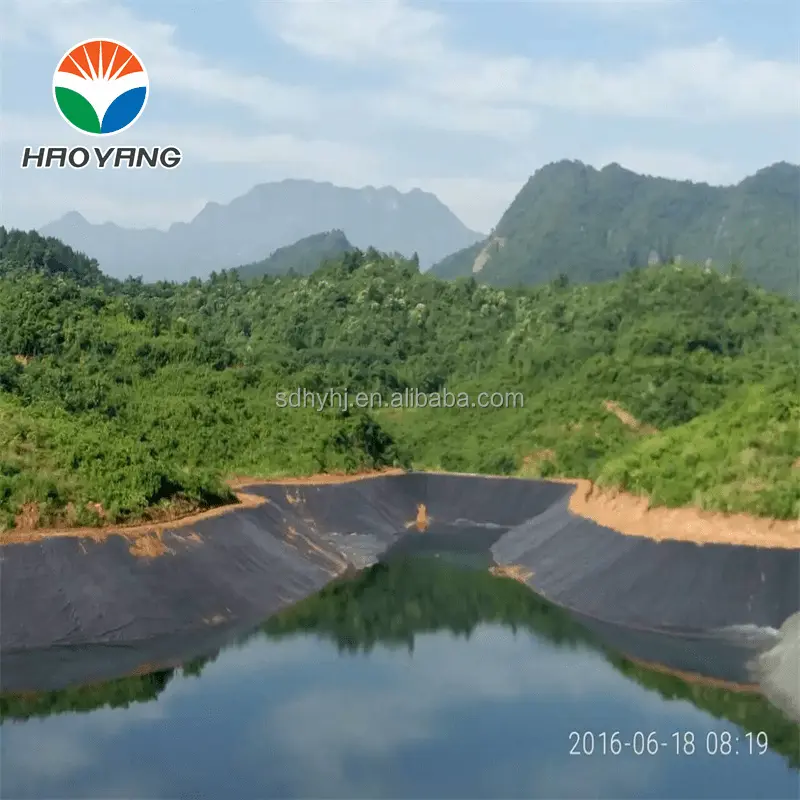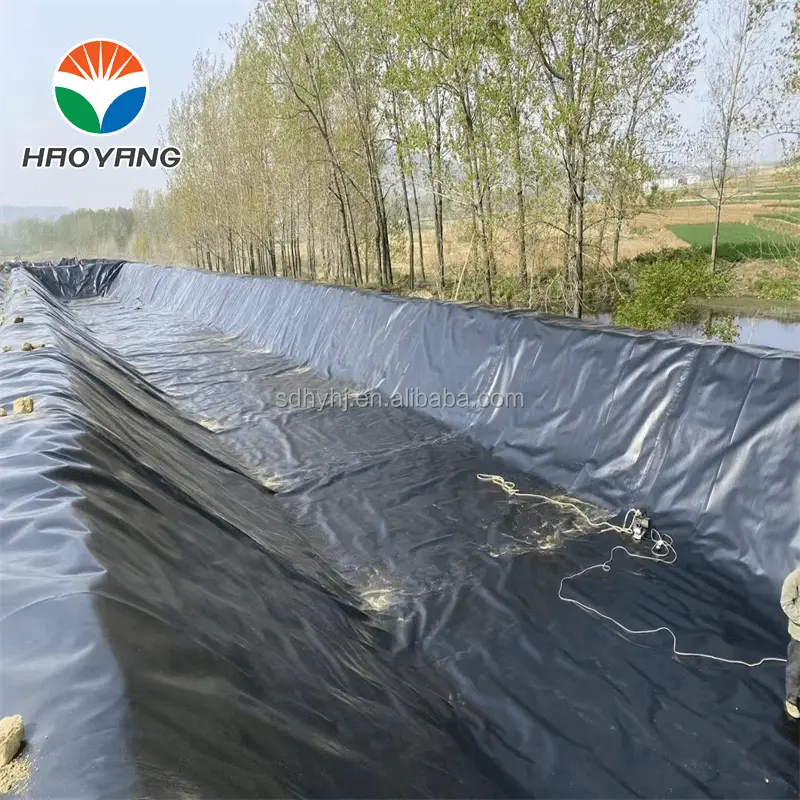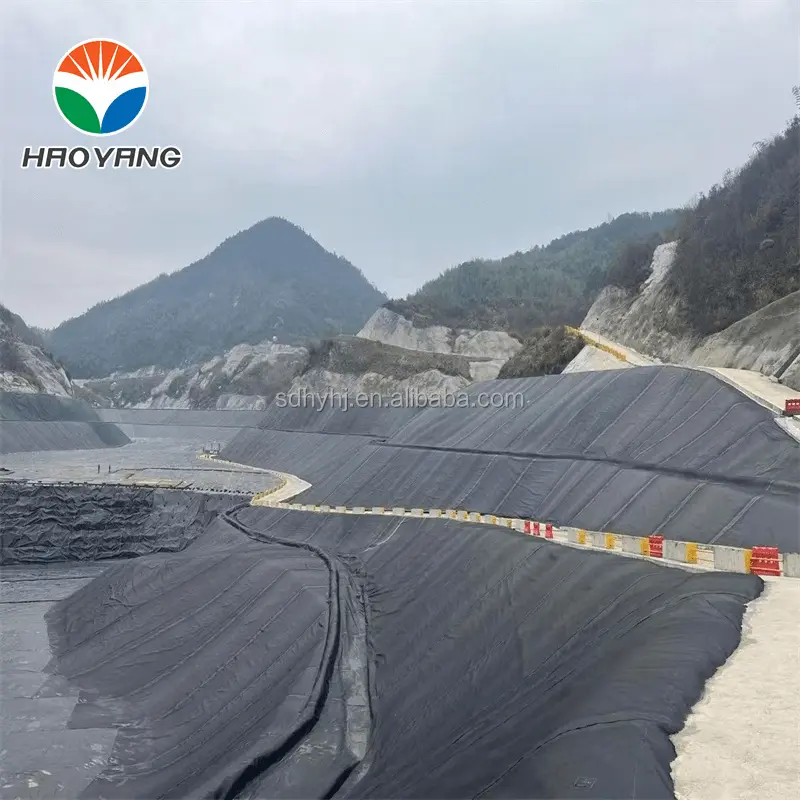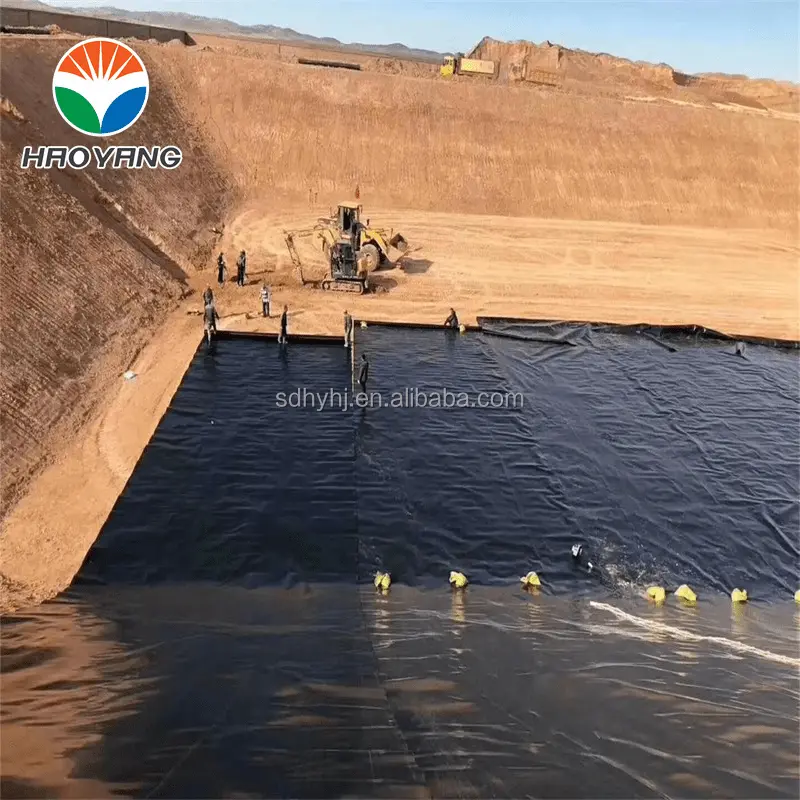1.5mm HDPE Geomembrane for Construction: A Comprehensive Guide
High-Density Polyethylene (HDPE) geomembranes have become indispensable in modern construction, offering robust solutions for containment, waterproofing, and environmental protection. Among the various thicknesses available, the 1.5mm HDPE geomembrane stands out as a versatile choice for projects requiring durability, flexibility, and cost-efficiency. This article explores the technical specifications, applications, installation best practices, and environmental benefits of this material.

Technical Specifications of 1.5mm HDPE Geomembrane
HDPE geomembranes are manufactured from virgin polyethylene resin, ensuring consistent quality and performance. The 1.5mm variant strikes a balance between thickness and flexibility, making it suitable for both flat and irregular surfaces. Key technical parameters include:
| Property | Specification | Industry Standard |
|---|---|---|
| Thickness | 1.5mm ± 5% | ASTM D5199 |
| Density | 0.94–0.96 g/cm³ | ISO 1183 |
| Tensile Strength (MD/TD) | ≥ 27 MPa / ≥ 25 MPa | ASTM D6693 |
| Elongation at Break | ≥ 600% | ASTM D6693 |
| Carbon Black Content | 2–3% | ASTM D1603 |
| UV Resistance | ≥ 90% Retained Strength (2000h) | ISO 4892-3 |
| Puncture Resistance | ≥ 400 N | ASTM D4833 |
These properties ensure the material withstands harsh environmental conditions, chemical exposure, and mechanical stress.
Applications in Construction
Waste Management
Landfills: 1.5mm HDPE geomembranes act as impermeable barriers in base liners and caps, preventing leachate contamination of soil and groundwater.
Hazardous Waste Containment: Their chemical resistance makes them ideal for isolating toxic substances.
Water Conservation
Reservoirs and Canals: Used in lining systems to minimize seepage in irrigation canals, ponds, and reservoirs.
Aquaculture: Provides a durable, non-toxic lining for fish ponds and shrimp farms.
Mining and Energy
Heap Leach Pads: Prevents leakage of cyanide solutions in gold mining operations.
Oil and Gas: Lines secondary containment areas for storage tanks and drilling pads.
Civil Engineering
Tunnel Waterproofing: Flexible enough to conform to curved surfaces in tunnel linings.
Decorative Ponds: Combines aesthetic appeal with functional waterproofing.
Installation Best Practices
Proper installation is critical to maximize the lifespan of HDPE geomembranes. Key steps include:
Site Preparation
Clear debris, rocks, and roots.
Ensure a smooth subgrade with < 2% slope variation.
Deployment
Unroll the material in temperatures above 10°C (50°F) to avoid cracking.
Allow 1–2 hours for acclimatization before welding.
Seaming
Use dual-track thermal welding for primary seams.
Conduct air pressure tests (ASTM D8167) to verify seam integrity.
Anchoring
Secure edges with concrete anchors or trench burying to prevent uplift.
Environmental and Economic Benefits
Longevity: Expected lifespan of 50+ years in protected applications.
Low Maintenance: Resistant to root penetration, UV degradation, and biological growth.
Cost-Effectiveness: Lower material and installation costs compared to thicker alternatives (e.g., 2.0mm).
Sustainability: HDPE is recyclable, reducing lifecycle environmental impact.

Comparison with Alternative Materials
| Material | Thickness | Tensile Strength | UV Resistance | Cost per m² |
|---|---|---|---|---|
| 1.5mm HDPE Geomembrane | 1.5mm | 27 MPa | High | 1.80 |
| PVC Geomembrane | 1.5mm | 20 MPa | Moderate | 2.20 |
| EPDM Rubber | 1.5mm | 7 MPa | Low | 3.00 |
HDPE outperforms alternatives in strength and durability, making it the preferred choice for demanding projects.
Future Trends
Advancements in manufacturing are leading to thinner yet stronger geomembranes. For instance, 1.0mm HDPE variants now meet performance standards previously requiring 1.5mm thickness. Additionally, smart geomembranes embedded with sensors for leak detection are emerging, enhancing monitoring capabilities.

Conclusion
The 1.5mm HDPE geomembrane remains a cornerstone of sustainable construction, offering unmatched versatility across industries. Its technical robustness, combined with evolving installation techniques, ensures it will continue to play a pivotal role in environmental protection and infrastructure development.
By prioritizing quality materials and adhering to installation best practices, projects can achieve long-term success while minimizing ecological footprints.

942.webp)
237.webp)
106.webp)